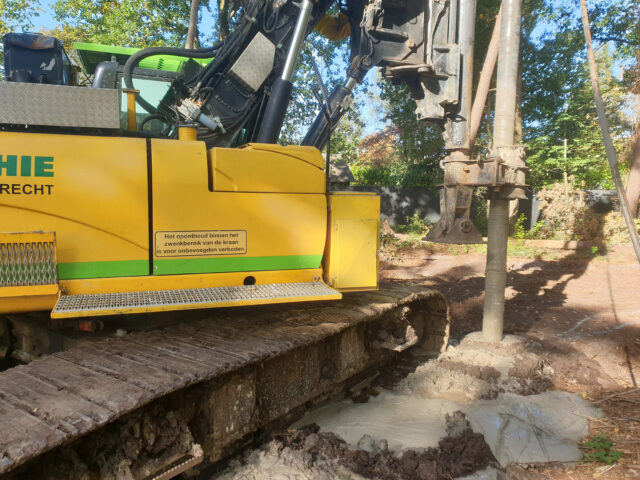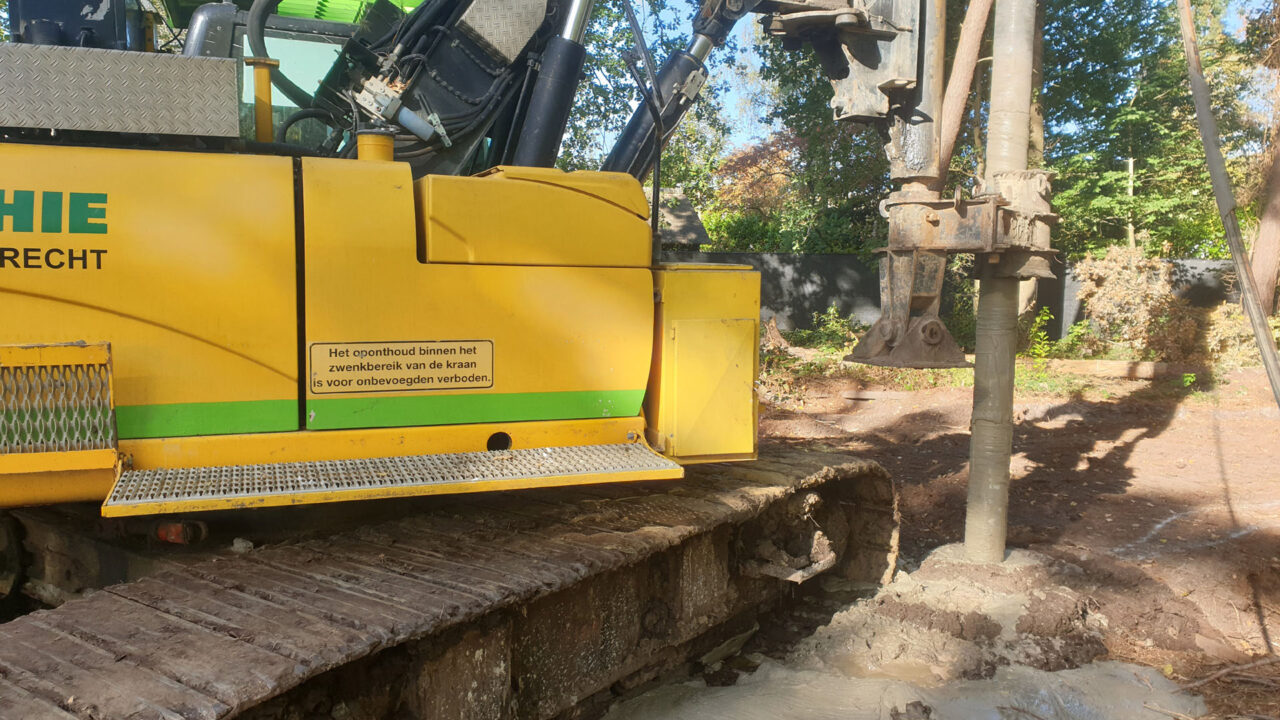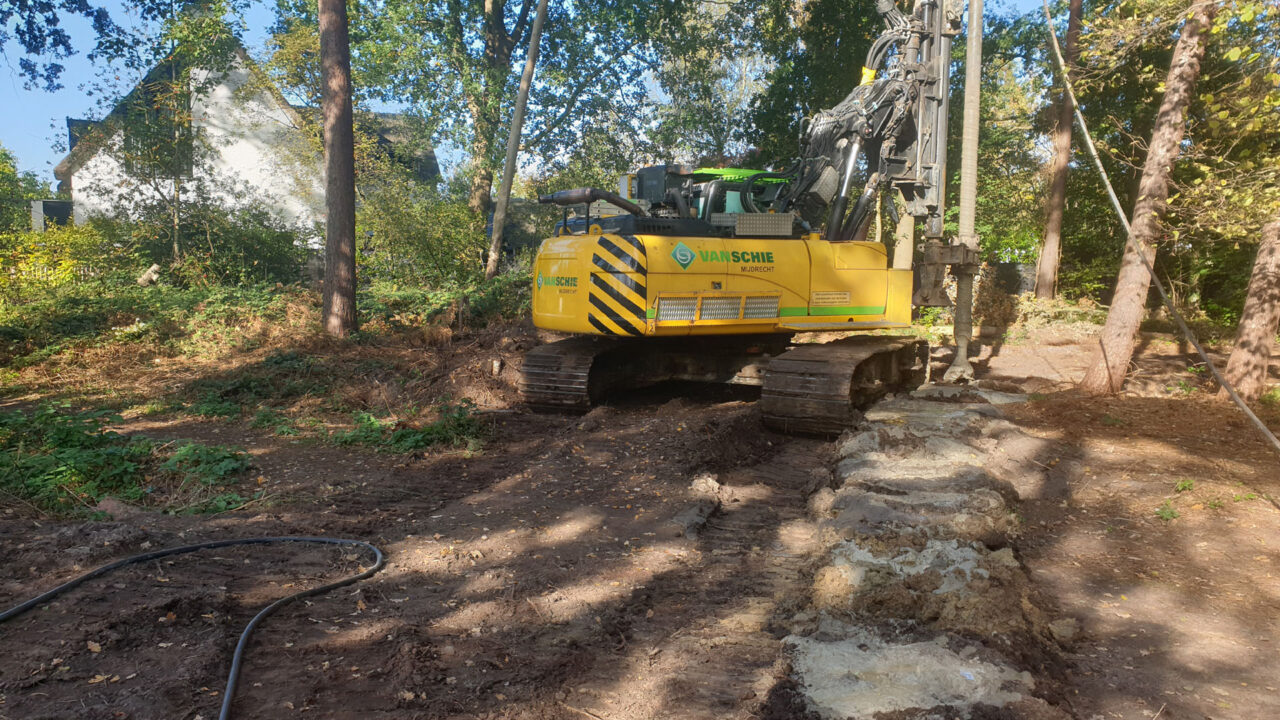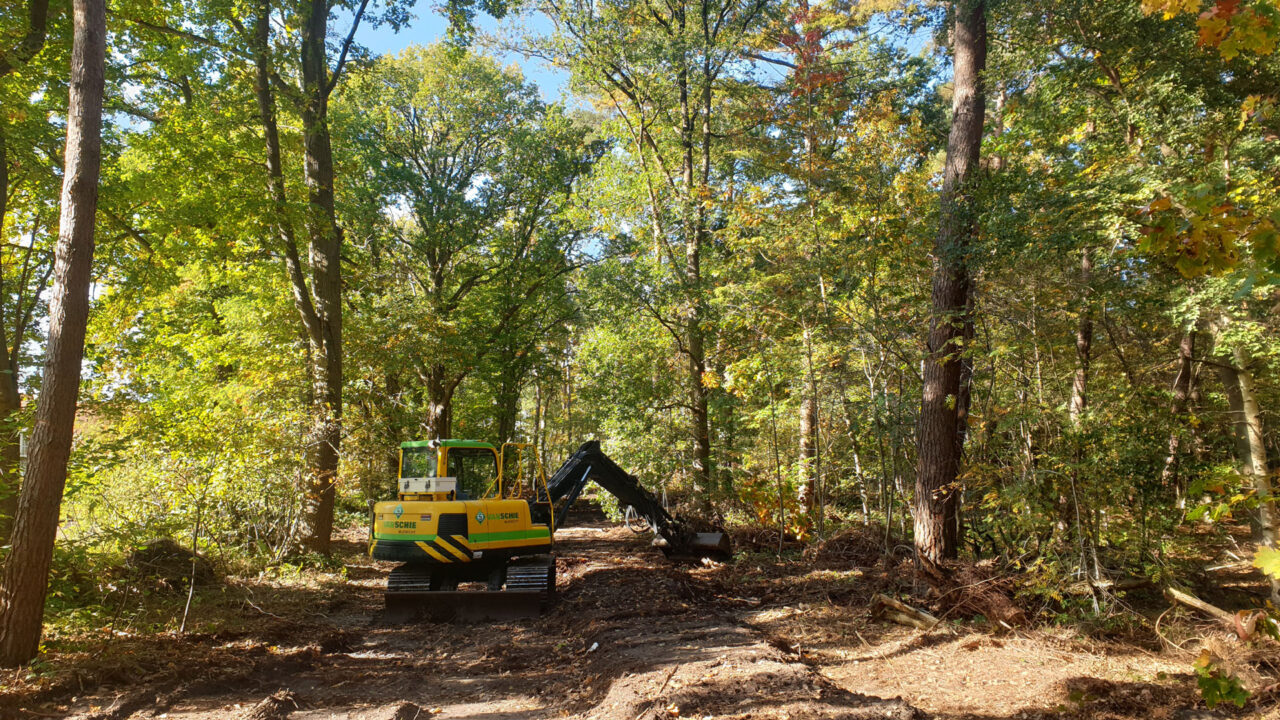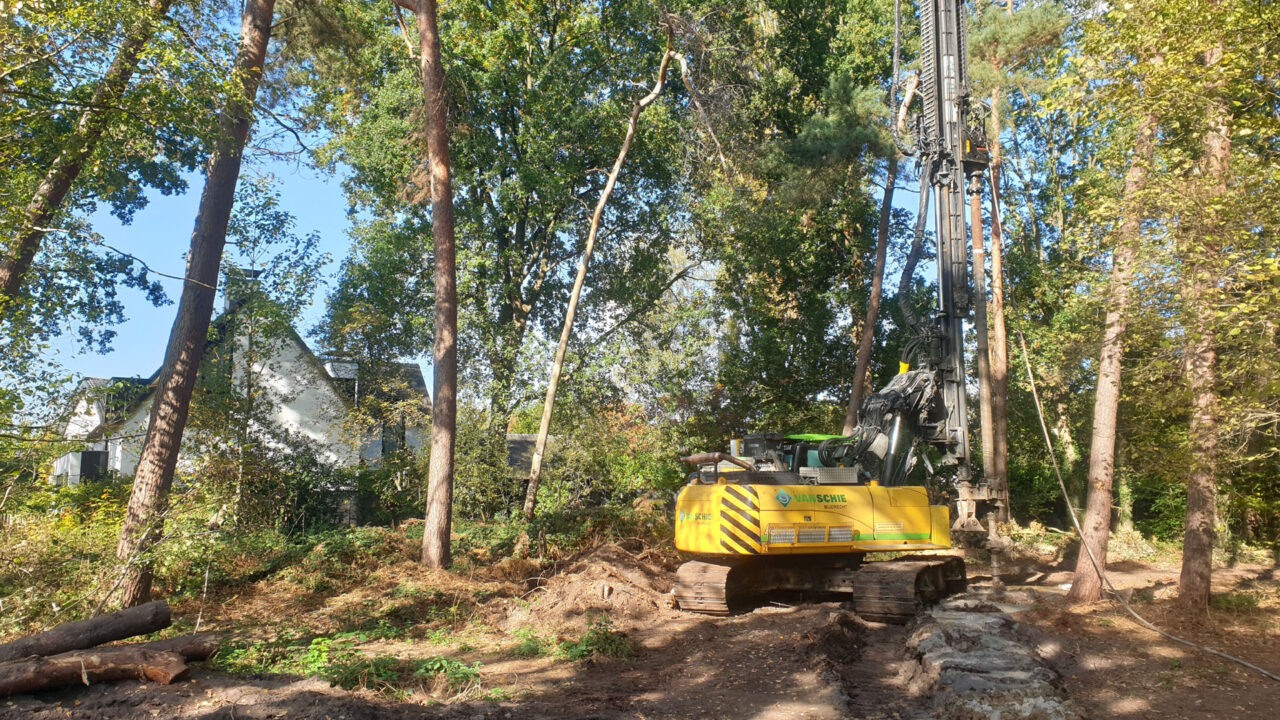The residents of a residential neighborhood along the forest edge were increasingly experiencing wet feet in their basements and souterrains. Seepage water derived from the forest. But that is now being solved by the installation of a vertical underground seepage screen, a specialty of Van Schie.
The Ulvenhoutse Bos is a small forest area, where the water balance is not quite functioning as the Forestry Commission would like it to. The forest is slightly higher than the neighborhood, and when a lot of rainwater comes down it is not all retained by the forest, but flows underground to the forest edge and to the houses. It is not good for the forest either, as it dries out. Moreover, it belongs to a Natura 2000 area.
Swelling Clay
What Van Schie is doing now is constructing a kind of “underground sheet piling” over a length of 360 meters, not of steel but of a clay-like substance: bentonite, also called swelling clay. This is injected with a special drilling rig. At the same time as drilling, bentonite penetrates the borehole and mixes with the earth. In fact, the drill works like a large stick blender.
Sliding it up slightly each time creates a complete underground wall, a seepage screen. In this case, between 4 and 5 meters deep. Indeed, at that depth the screen connects to an impermeable loam layer.
Bentonite, by the way, is a natural product. It is a type of clay derived from volcanic ash that was first found at Fort Benton in the US. It consists of sodium particles that are so small that they can waterproof the soil.


